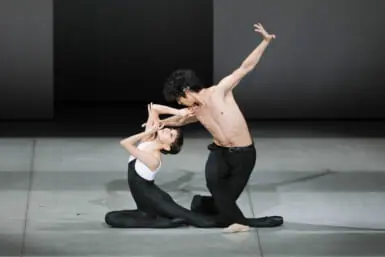LG Williams, the Weekender’s resident art critic, sat down with “Exit Through the Gift Shop” star ‘Mr. Brainwash’ to talk Banksy, French restaurants and the Oscars.
LG Williams: ‘Mr. Brainwash’ (“MBW”) is a pseudonym for a movie character, Thierry Guetta, in the film “Exit Through the Gift Shop”, directed by the graffiti artist Banksy. So, does Mr. Brainwash exist in everyday life?
MBW: Well, whether Mr. Brainwash exists or does not exists is really besides the point. The point is that Mr. Brainwash has exhibitions and sells artworks.
So Mr. Brainwash is your alter ego, avatar, or hoax?
In the beginning, Mr. Brainwash was an alter ego. But now, Mr. Brainwash is an established brand, an artist in his own right.
Then “Exit Through The Gift Shop” is a real true story?
Yes, of course it is. It is celluloid truth. If it wasn’t real it would be a ghost story.
I read you lived at the Farmer’s Daughter Hotel on Fairfax in Los Angeles, and so have I. Tell me, how was it for you living at the hotel when you were young—before it became trendy?
It was tough. My father left us to go back to France and died. I had to fend for my brothers and sisters. There weren’t two Whole Foods on Fairfax back then; that would have really helped out.
What was it like going from teenage nightclub impresario to clothing store owner, filmmaker and, ultimately, to pop artist?
It was tough. Clubbing wears you down. In the morning you are always tired from late nights’ entertaining and partying. You can never get enough sleep, I say.
Why did you chose graffiti rather than conventional painting?
Banksy told me I could make a lot of money with graffiti. You see, graffiti artists are dumb, and their artwork is stupid, and the audience is mostly kids, rich kids with money, so they are not interested in quality—unlike the luxury clothing industry which I was previously in—so it was easy to quickly fit right in. Plus I knew the two biggest artists in the field: Banksy and Shepard.
Yes, I would imagine the “fine art world” would have been more difficult to penetrate, and taken longer. Plus, come to think of it, Matthew Barney had a daughter with Björk.
Speaking of children, General Foods knows the formula for making money: sell colorful, sugar-filled cereal to children.
Yes, indeed. Admittedly, your artwork strongly emulates the styles and artistic concepts of well-known street artists, including Banksy and Shepard Fairey. Why did you choose these two artists?
That is simple. As a former store owner, I can tell you definitively that it is much more difficult to sell something wholly unexpected than something wholly derivative. Rich people are comforted by purchasing something they understand, what they are familiar with. Nobody is going to buy something unique and pay big bucks for something they don’t thoroughly understand.
What is it like to be famous in America?
Well, as you can tell I have a French accent, so I seemed to be famous in America to most Americans well before the movie. American girls love French accents—thank you, Jackie-O.
But how does fame sit with your anti-establishment attitudes?
When I get paid, the pain quickly goes away. Well, no. Actually, since the work is, as most critics agree, derivative, when the art sells I get to have the last laugh. The joke is on them and they pay for it: in the galleries and the movie theaters. If I wasn’t getting paid, and paid a lot, all this attention and scrutiny would suck.
What is the difference between selling an artwork for three figures and six figures?
The dinners. You get to eat at a lot of really great food, especially great French food at fine French restaurants when you sell art for six figures. Plus, the maître d’s give you a prominent table.
Did you take acting classes before “Exit Through The Gift Shop”?
Actually, Banksy knows Brad and Angelina, so I spoke with them about the process before shooting; they were very helpful.
How did you take to film production and movie making?
Filming sucks, because you have to count on people—although in this case everyone was great and really helpful. But there are times when you want to work late—or don’t want to work—which makes making a movie stressful. (Pop art is definitely an easy process since Warhol paved the way.)
What things have you learned from Warhol?
Three specifically: scanning, photoshopping, and hired assistants. As a result, I don’t have to do any tedious work. Hell, Warhol (and Wal-Mart) both built a gigantic global empire upon the minimum wage worker. And, I am happy with the fact that the only boundaries I can conceivably break are the seams of my wallet.
So the workers carry out your “ideas” through scanning, Photoshop and stencils?
Exactly.
Stéphane Mallarmé reportedly said to Degas that poetry had nothing to do with ideas, rather it was built upon words and images. What ideas have you had lately?
Fair enough. I’ve only had one idea: make money. Like Paul Newman, I’m just running a business. You see, like many others I gave everything I had to make this happen. If my art career hadn’t taken off, I would have lost everything.
How has your motto “Buy for $2, sell it for $200” changed with success and renown?
My new motto is: “Make it for $20 and sell it for $200,000.” A-list celebrities and art collectors will buy anything; ask Bernie Madoff and Banksy.
Do you see irony in turning anti-establishment vandalism into an art world commodity?
Yes.
Would you like to elaborate further?
No.
Do you have anything to add to the record about Joachim Levy, the Swiss filmmaker, who is threatening to sue Banksy—and reveal his identity—unless he is paid and credited for the role in the movie.
No, not really. I wish him well.
How did you transition from an entrepreneur to an artist?
Banksy told me to pick up a paintbrush and spray can. Believe me, graffiti art is a lot easier and way more lucrative than my former vocation: sewing scraps of jeans into jackets and finishing them off with Looney Tunes characters for Warner Bros. Stores.
Graffiti is getting a lot of heat now, in 2010 Time Magazine named Shepard Fairey as the #6 biggest lie of 2009 (he has recently settled his AP case out of court), and recently another major appropriation artist has been found guilty of copyright infringement. Since your art rests upon both graffiti and banality (artist Glen E. Friedman has a lawsuit against you for appropriating one of his photographs—specifically, an image of the music group Run DMC), what do you make of this?
One of my large paintings sold recently for $300,000.
What is your fascination with Einstein?
His image is the worldwide embodiment of intelligence.
What was he smart about?
That’s just it. It is a paradox. Nobody knows but everyone thinks he was smart.
I get it: a dumb shit making dumb stuff from a supposedly smart image for dumb people all over the world to buy.
Voilà. You see, it’s a brilliant idea, a brilliant strategy. And, it’s worked!
Then you make a movie!
Oui, then you make a movie!
At the Oscars, you wore a suit by Dolce and Gabbana, how was that?
Incredible.
“Exit Through the Gift Shop” is scheduled
for release in Japan on July 16.









